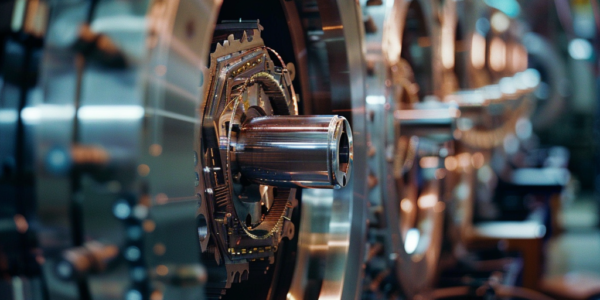Navigating Privacy and Scientific Breakthroughs in Nanotechnology
Explore the critical intersection of privacy and nanotechnology advancements in our digital age. Understand the implications of cookie consent on personal data processing and discover groundbreaking research on manipulating single-molecule reactions, paving the way for innovations in pharmaceuticals and materials science.
Pulsars May Illuminate Dark Matter Mysteries Through Axion Detection
Recent advancements in astrophysics reveal that rapidly spinning neutron stars, or pulsars, may play a crucial role in detecting dark matter through the production of axions. Research from the University of Amsterdam suggests these elusive particles could be generated in significant quantities, offering new insights into the universe’s mysteries and the fundamental nature of dark matter.
MIT Physicists Uncover Edge States in Ultracold Atoms, Paving Way for Lossless Energy Transmission
MIT physicists have made a groundbreaking discovery in quantum physics, capturing images of electrons flowing without resistance along the edges of materials. This phenomenon, known as edge states, could revolutionize energy and data transmission, enabling super-efficient circuits that minimize energy loss. Published in Nature Physics, this research not only validates decades of theoretical work but also opens new avenues for technological advancements in electronics and telecommunications.
New Theory Proposes Universe as Massive 4X Strategy Game
A recent physics paper proposes a new theory suggesting that our reality may be similar to a massive 4X strategy game. Dr. Melvin Vopson’s research explores the concept of information theory and its relation to our existence, introducing the second law of information dynamics. This theory posits that information is equivalent to energy and possesses mass, potentially solving cosmological mysteries. While lacking concrete evidence, Dr. Vopson’s work prompts contemplation about a universe governed by a computational framework, challenging established beliefs and raising intriguing possibilities for the nature of reality.
Physicists Capture Direct Observational Evidence of Wigner Crystal, a Quantum Phase of Matter
Physicists have achieved a significant breakthrough in capturing direct observational evidence of a Wigner crystal, a peculiar form of matter proposed by theoretical physicist Eugene Wigner almost 90 years ago. This crystal, made up of free electrons forced together in a neat, crystalline lattice without atoms, has long been a subject of fascination and study. Al Yazdani, a physicist from Princeton University, expressed the significance of visualizing the Wigner crystal, stating that it not only confirms many of its properties but also enables new avenues of study that were previously inaccessible. The visualization of the Wigner crystal provides a unique opportunity to delve into the behavior of this quantum phase of matter, shedding light on its formation and properties. This breakthrough opens up new possibilities for further exploration and understanding of the fundamental nature of matter.
Renowned Physicist Peter Higgs Passes Away, Leaving Lasting Legacy in Particle Physics
Renowned physicist Peter Higgs, known for his groundbreaking work on the Higgs boson, has passed away. His theory in the 1960s aimed to explain why atoms have mass, leading to the discovery of the ‘God particle’ in 2012. Despite initial struggles, his contributions to particle physics have left an indelible mark on scientific understanding.
Physicists at CERN Discover Resonant ‘Ghost’ Force in Super Proton Synchrotron
Physicists at CERN have made a groundbreaking discovery, identifying a previously undetected force within the Super Proton Synchrotron (SPS). Published in the journal Nature Physics, the research unveils the existence of a 3D shape that shifts over time, requiring a 4D system of equations for accurate measurement and modeling. The discovery of the resonant ghost is crucial for future work at the facility, shedding light on the intricate dynamics at play within particle accelerators.
MIT Scientists Image Movement of Heat in Superfluid Quantum Gas for the First Time
MIT scientists have made a groundbreaking discovery in the world of superfluid quantum gas by successfully imaging the movement of heat in a wave, known as ‘second sound,’ through this exotic fluid for the first time ever. This achievement holds significant implications for the understanding of high-temperature superconductors and neutron stars, and opens up new avenues for research in materials science and astrophysics.
Physicists Make Major Breakthrough in Understanding Proton Structure
Physicists have made a major breakthrough in understanding the structure of the proton, shedding light on the forces that govern subatomic particles. A recent study, published in Reviews of Modern Physics, has revealed new insights into the mechanical properties of…









